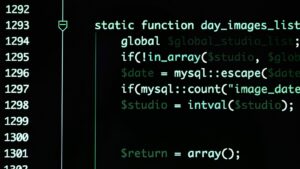”
Key Takeaways
- Understanding Java Reactive Programming: This paradigm focuses on asynchronous, non-blocking data streams, allowing applications to react quickly to events and manage multiple operations efficiently.
- Key Concepts: Essential elements include Observables, Subscribers, Backpressure, and Operators, which form the foundation for building effective reactive systems.
- Core Principles: Emphasizes responsiveness, resilience, elasticity, and a message-driven architecture, ensuring high performance and reliability in applications under various load conditions.
- Libraries and Frameworks: Key tools like Project Reactor, RxJava, and Spring WebFlux support the development of reactive applications, providing functionalities for managing data streams and asynchronous processing.
- Use Cases: Java reactive programming is ideal for real-time data processing, web applications, and microservices architectures, enhancing responsiveness and scalability in different domains.
- Best Practices: Effective implementation requires careful design, robust error handling, and specialized testing strategies to ensure quality and performance in reactive applications.
In today’s fast-paced digital landscape, applications must be able to handle a multitude of tasks simultaneously without sacrificing performance. Java reactive programming emerges as a powerful solution to this challenge, enabling developers to build responsive and resilient applications. By embracing an asynchronous approach, it allows systems to react to events in real-time, ensuring that resources are used efficiently.
This programming paradigm shifts the focus from traditional blocking operations to a more fluid, event-driven model. With libraries like Reactor and RxJava, developers can easily manage data streams and handle complex event sequences. As businesses increasingly demand faster and more scalable applications, understanding Java reactive programming becomes essential for any developer looking to stay ahead in the competitive tech environment.
Java Reactive Programming
Java reactive programming represents a paradigm that emphasizes asynchronous, non-blocking data streams. This approach allows applications to respond dynamically to events and manage multiple operations efficiently.
Definition And Key Concepts
 Reactive programming focuses on data flows and the propagation of change. Key terms include:
Reactive programming focuses on data flows and the propagation of change. Key terms include:
- Observable: Represents a data source that emits events over time.
- Subscriber: An entity that consumes the data emitted by an observable.
- Backpressure: A mechanism that prevents data overload by managing how much data can be sent between producers and consumers.
- Operators: Functions that transform, filter, or combine data streams, enhancing flexibility in processing events.
Understanding these concepts lays the foundation for building reactive applications using Java libraries such as Reactor and RxJava.
Importance In Modern Software Development
Java reactive programming plays a vital role in meeting contemporary software demands. Key benefits include:
- Scalability: Handling high volumes of concurrent requests without significant resource use.
- Responsiveness: Maintaining application performance through real-time data processing.
- Fault Tolerance: Enabling systems to recover from failures by incorporating resilience patterns.
Adopting this programming paradigm equips developers with the skills needed to create robust and efficient applications, aligning with the ongoing shift towards event-driven architectures.
Core Principles Of Reactive Programming
Java reactive programming revolves around four core principles: responsiveness, resilience, elasticity, and message-driven architecture. These principles ensure applications maintain high performance, even under varying loads.
Responsiveness
Responsiveness emphasizes an application’s ability to react swiftly to user inputs and changes in the environment. High responsiveness enhances user experience by minimizing latency. In reactive systems, components communicate asynchronously, allowing tasks to operate independently, leading to improved efficiency and faster feedback mechanisms.
Resilience
Resilience focuses on an application’s capacity to recover from failures gracefully. It involves implementing strategies to detect errors and manage them without disrupting the overall system. By creating an environment that tolerates faults, developers can ensure that applications remain operational even when individual components face issues, thus enhancing reliability.
Elasticity
Elasticity denotes an application’s capacity to scale resources up or down based on the current workload. This dynamic handling of resource allocation optimizes performance, preventing system overload during peak demand periods. Reactive frameworks automatically adjust resource usage without manual intervention, ensuring consistent application efficiency.
Message-Driven
Message-driven architecture centers on the use of asynchronous messaging for communication between components. This decouples interaction and enables flexibility within the system. By employing a message-driven approach, applications can handle a large volume of events or data streams, improving scalability and allowing components to operate in isolation while still collaborating effectively.
Key Libraries And Frameworks
Java reactive programming is supported by several key libraries and frameworks that enhance its capabilities. These tools facilitate the development of reactive applications, making it easier for developers to manage asynchronous data streams.
Project Reactor
Project Reactor is a foundational library for reactive programming in Java. It provides a comprehensive toolkit for building non-blocking applications. With its two main types, Flux and Mono, Project Reactor allows developers to handle multiple data items (Flux) and single data items (Mono) efficiently. It supports backpressure, enabling developers to manage data flow between producers and consumers effectively, which prevents overwhelming the system. Project Reactor integrates seamlessly with Spring, ensuring smooth implementation in Spring-based applications.
RxJava
RxJava is another prominent library for reactive programming in Java. It uses the observer pattern to manage asynchronous sequences of data. RxJava facilitates the handling of events, offering a rich set of operators for filtering, transforming, and combining data streams. Its modular structure promotes reusability and ease of testing. RxJava supports backpressure management and error handling, making it a robust choice for building scalable applications. This library is widely adopted across various industries due to its versatility and extensive documentation.
Spring WebFlux
Spring WebFlux is a reactive web framework built on Project Reactor. It offers a non-blocking, event-driven model, allowing developers to build scalable web applications with fewer resources. Spring WebFlux utilizes reactive programming principles to handle HTTP requests and responses asynchronously. It provides extensive integration with reactive data sources, such as MongoDB and Cassandra, supporting reactive repositories and templates. Its compatibility with Spring’s ecosystem facilitates simplified migration from traditional Spring MVC applications to a reactive architecture.
Use Cases And Applications
Java reactive programming finds extensive use in various domains, enabling applications to respond efficiently to real-time demands. Its event-driven nature supports powerful, seamless operations across multiple scenarios.
Real-Time Data Processing
Real-time data processing applications benefit significantly from Java reactive programming. Frameworks such as RxJava and Project Reactor allow systems to handle streaming data with low latency. This is particularly relevant in finance, where high-frequency trading systems leverage reactive programming to process market data instantaneously. In social media analytics, companies use reactive streams to analyze user interactions and feedback in real time, ensuring timely responses to engagement trends.
Web Applications
Web applications employ Java reactive programming to enhance responsiveness and scalability. Reactive frameworks like Spring WebFlux enable developers to create non-blocking web services, allowing concurrent user requests without the bottleneck of traditional blocking I/O. This approach caters to applications with variable loads, such as online retail platforms, where user traffic fluctuates dramatically during sales or promotions. The flexibility of reactive services improves user experience by minimizing latency during peak traffic periods.
Microservices Architecture
 Microservices architectures leverage Java reactive programming to facilitate efficient inter-service communication. Reactive systems support asynchronous message-passing, reducing the risk of bottlenecks during data exchange. In an environment where numerous services operate independently, this architecture ensures robust scalability and fault tolerance. For instance, e-commerce applications often utilize microservices to manage inventory, transactions, and customer profiles, allowing each service to respond dynamically while maintaining overall system performance. This decoupling of services contributes to enhanced maintainability and rapid deployment in evolving application landscapes.
Microservices architectures leverage Java reactive programming to facilitate efficient inter-service communication. Reactive systems support asynchronous message-passing, reducing the risk of bottlenecks during data exchange. In an environment where numerous services operate independently, this architecture ensures robust scalability and fault tolerance. For instance, e-commerce applications often utilize microservices to manage inventory, transactions, and customer profiles, allowing each service to respond dynamically while maintaining overall system performance. This decoupling of services contributes to enhanced maintainability and rapid deployment in evolving application landscapes.
Best Practices For Implementing Java Reactive Programming
Implementing Java reactive programming effectively requires adherence to several best practices. Developers enhance performance, maintainability, and reliability by following these principles.
Designing Reactive Systems
Designing reactive systems involves careful consideration of system architecture. Architectures should reflect the principles of responsiveness and resilience. Utilizing reactive streams allows for non-blocking data flow, ensuring that components communicate asynchronously. Designing modular components promotes loose coupling, enabling them to scale independently. Employing dedicated resources for blocking tasks prevents saturation of reactive threads, enhancing overall system performance. Implementing backpressure mechanisms effectively controls the flow of data and prevents overwhelming subscribers.
Error Handling Strategies
Effective error handling strategies are crucial in reactive programming. Rather than relying on traditional try-catch blocks, developers should leverage reactive paradigms to handle errors gracefully. Operators such as onErrorResume and onErrorReturn allow applications to recover from errors without crashing. Implementing centralized error handling ensures consistent responses across the application. Logging error details aids in monitoring and debugging. Providing user-friendly fallback responses enhances user experience, avoiding abrupt failures during data processing.
Testing Reactive Applications
Testing reactive applications requires specific approaches to ensure reliability. Employing tools that support asynchronous testing is essential. Frameworks like Mockito and JUnit 5 cater to asynchronous calls, allowing developers to verify behavior accurately. Utilizing the TestScheduler in RxJava or similar mechanisms in Project Reactor facilitates controlled execution of time-dependent operations. Testing backpressure scenarios ensure that applications handle data flow appropriately under load. Writing integration tests for the full reactive pipeline confirms that components collaborate seamlessly, leading to a more robust application.
Developers Aiming To Create High-performance Applications
Java reactive programming stands as a crucial approach for developers aiming to create high-performance applications in a fast-evolving digital landscape. By embracing this paradigm, they can build systems that are responsive, resilient, and elastic, meeting the demands of modern users. The integration of libraries like Reactor and RxJava not only streamlines the development process but also enhances the ability to manage complex data streams efficiently.
As the tech industry continues to prioritize speed and scalability, understanding and implementing Java reactive programming will become increasingly vital. This knowledge equips developers with the tools needed to craft applications that can handle varying loads while maintaining optimal performance. Adopting these practices ensures they remain competitive and relevant in a rapidly changing environment.
“



